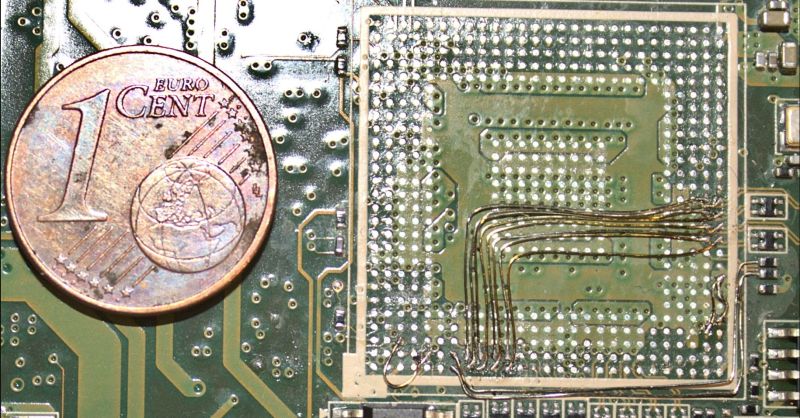Some products seem to have a part of two that’s pretty much guaranteed to end up dying on you. In the case of the 2015-vintage Wacom Cintiq Companion 2, this turns out to be the so-called Athena chip, which switches the display input between the HDMI port and internal display controller. This allows for use in both standalone mode (tablet), as well as companion mode, where it acts as a drawing tablet for a connected PC. When confronted with such a faulty device, [neutrino] found and applied a simple fix: bypassing the Athena chip altogether.
This fix is recommended by the Repair Preservation Group’s wiki page on the topic, noting that this will permanently disable its use as an external display without additional repairs to recreate the functionality of the removed chip. This STDP9320 (PDF) part by ST Microelectronics is described as a ‘Premium high resolution multimedia monitor controller with 3D video’ and contains a wide range of video scalers, a HDMI receiver, DisplayPort (including embedded DP) support. With this fix, the Cintiq Companion 2’s Intel CPU’s graphics core is directly connected to the display’s eDP input, along with a range of voltages and enable pins.
What the exact reason is for the STDP9320 dying after a few years with what appears to be some kind of internal power failure or short, but this bypass fix at least restores standalone functionality. Sourcing a replacement for this obsolete IC seems possible, but a big gamble. Sadly, it would seem that this Wacom device will no longer be a companion for much longer.
















This is amazing work. I’m wondering, if this something that happens often, wouldn’t it make sense to make a bypass PCB that has the same BGA footprint and can be soldered onto the board as it was a BGA chip?
If you’re willing to do all the work and waiting of making a pcb I suppose… People who can do tricky magnet wire bodging might want to simply get on with it.
Designing such a simple flex pcb to bodge traces like this would be trivial and not take particularly long to receive a handful from china nowadays (sure longer than you can manually hand solder though of course). Having a drop in place flex ribbon would be more for people who cant/don’t want to solder tiny wires to tiny pads and would rather make doing the fix a bit easier/more automated.
A flex PCB would be a nice thing because you could preserve the high speed differential pairs of the HDMI signal.
Of course, given some of the horrible cables you can buy, it appears that video signals are a bit more tolerant of tomfoolery than the spec sheets would have us believe.
But then you’d have to correctly solder it to the board and have no way to rework it if it goes wrong, despite only needing to connect a few signals. A better approach could be taken from the modchip scene – a small flex pcb with reasonably sized vias over the required pads that could then be soldered through.
Which part of two do they have? A one? The flat part at the bottom? Personally I like the slashy part that goes from the curvy part to the flat part.
Does anybody have any idea if this would be similar to, or even the same issue, that causes the display on the Cintiq 27 QHD to go dead? I’m almost certain it’s a chip/board issue of some sort but don’t have the skills to troubleshoot.
I posted about it 4 years ago at https://www.reddit.com/r/wacom/comments/9ff9r7/cintiq_27_qhd_touch_died_am_i_out_of_luck/ and I’m still hoping to find an answer some day. I haven’t given up on my $3,000 brick just yet.
According to this reddit post, it appears to use the exact same chip in it! https://www.reddit.com/r/wacom/comments/ibgt8i/cintiq_27qhd_black_screen_issue/
So it seems likely to me that the failure is the same. I think you could repair it in a similar way, though you might lose some monitor control functionality and only the DisplayPort input will work, but it’s better than nothing.
If you do manage to repair it it would be very neat if you could document it so others with the same issue might be able to repair theirs as well!